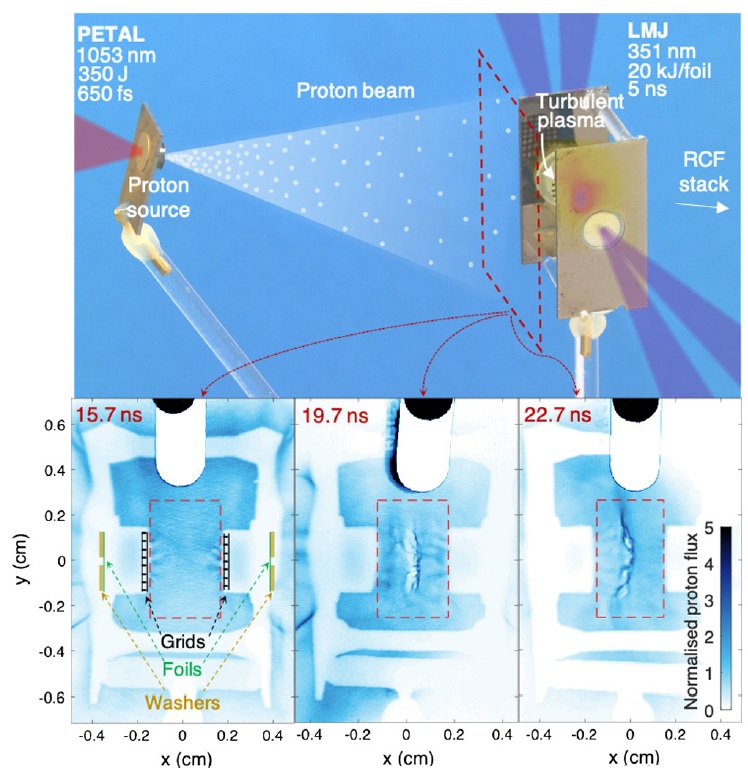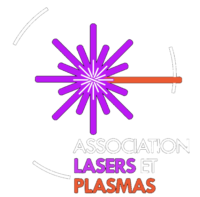PI: Prof. Gianluca Gregori, Department of Physics, University of Oxford, UK
Status: Performed in October 2017.
Publications: PRL
Inefficient magnetic-field amplification in supersonic laser-plasma turbulence
A. F. A. Bott*, L. Chen, G. Boutoux, T. Caillaud, A. Duval, M. Koenig, B. Khiar, I. Lantuéjoul, L. Le-Deroff, B. Reville, R. Rosch, D. Ryu, C. Spindloe, B. Vauzour, B. Villette, A. A. Schekochihin, D. Q. Lamb, P. Tzeferacos, G. Gregori, and A. Casner
*Department of Physics, University of Oxford, Parks Road, Oxford OX1 3PU, United Kingdom and Department of Astrophysical Sciences, University of Princeton, 4 Ivy Lane, Princeton, New Jersey 08544, USA
Phys. Rev. Lett. 127, 175002 – Published 21 October 2021
Abstract: We report a laser-plasma experiment that was carried out at the LMJ-PETAL facility and realized the first magnetized, turbulent, supersonic (Maturb ≈ 2.5) plasma with a large magnetic Reynolds number (Rm ≈ 45) in the laboratory. Initial seed magnetic fields were amplified, but only moderately so, and did not become dynamically significant. A notable absence of magnetic energy at scales smaller than the outer scale of the turbulent cascade was also observed. Our results support the notion that moderately supersonic, low-magnetic-Prandtl-number plasma turbulence is inefficient at amplifying magnetic fields compared to its subsonic, incompressible counterpart.

Lower panels: 8.5 MeV proton images (obtained from different experimental shots) at 15.7 ns (left), 19.7 ns (middle) and 22.7 ns (right) after the initiation of the drive beams. The proton flux normalization is defined relative to the mean of the regions enclosed by red-dashed lines in each image.
